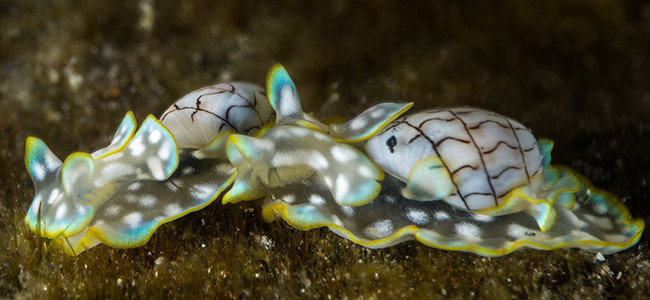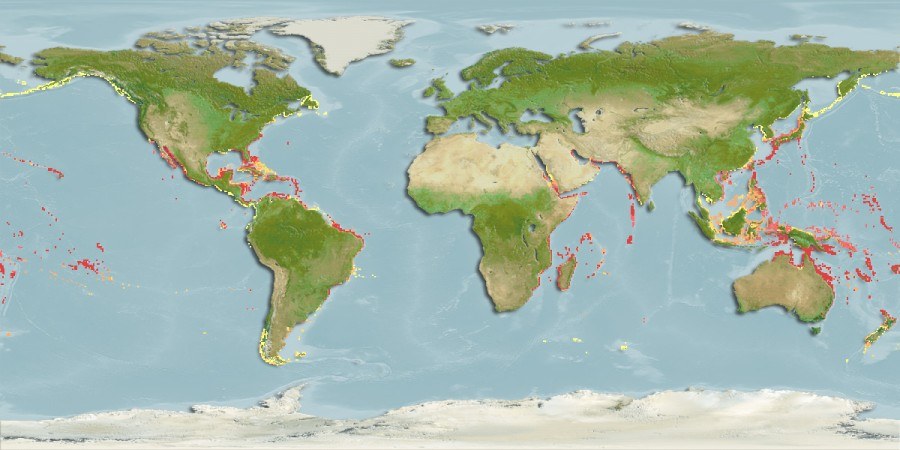Micromelo undatus is a small marine gastropod belonging to the family Aplustridae, known for its delicate appearance and colorful pattern. Its scientific name comes from Greek, where ‘micros‘ means small and ‘melo‘ refers to its melon-like shape, while ‘undatus‘ refers to the wavy lines decorating its shell. This species is native to the tropical and subtropical waters of the western Atlantic Ocean and the Caribbean, where it is found in shallow waters, especially in sandy areas or seagrass beds.
Micromelo undatus is a small mollusc, generally measuring between 1 and 3 cm in length. Its body is translucent white, and its most distinctive feature is its thin, fragile shell, which is oval-shaped and decorated with elegant wavy lines in green or brown. This shell does not fully cover the animal’s body, which is typical of many gastropods. Unlike other molluscs with sturdier shells, the shell of Micromelo undatus is light and can be easily damaged. The animal’s body, which extends beyond the shell, is adorned with bright blue spots, giving it a striking appearance. The rhinophores are short and simpler in appearance compared to other similar gastropod species.
Regarding its diet, Micromelo undatus is a specialized predator that feeds mainly on small marine organisms known as foraminifera. These are single-celled organisms living in marine sediment, and Micromelo undatus consumes them using its radula, a tongue-like structure with tiny teeth that allows it to scrape and extract food from the sediment. Although small, Micromelo undatus plays an important role in the food chain by controlling the population of foraminifera in its habitat.
Reproduction in Micromelo undatus is hermaphroditic, meaning each individual has both male and female reproductive organs. During mating, two individuals exchange sperm, allowing them to fertilize their eggs. After fertilization, the eggs are deposited in small capsules attached to sandy substrates or among seagrass leaves. The larvae are planktonic, floating freely in the water column until they develop enough to settle on the seabed and transform into juveniles.
An interesting fact about Micromelo undatus is that, despite being a relatively small and fragile animal, it is believed to secrete chemical defenses as part of its strategy to avoid predators. Also, unlike many other gastropods, its shell is more decorative than functional and does not provide complete protection, suggesting that Micromelo undatus relies more on its ability to hide among sand and seagrass as well as its chemical defenses rather than on its shell. This species is a fascinating example of the diversity of forms and strategies marine molluscs have developed to survive in their environments.
Photos:


 from
from